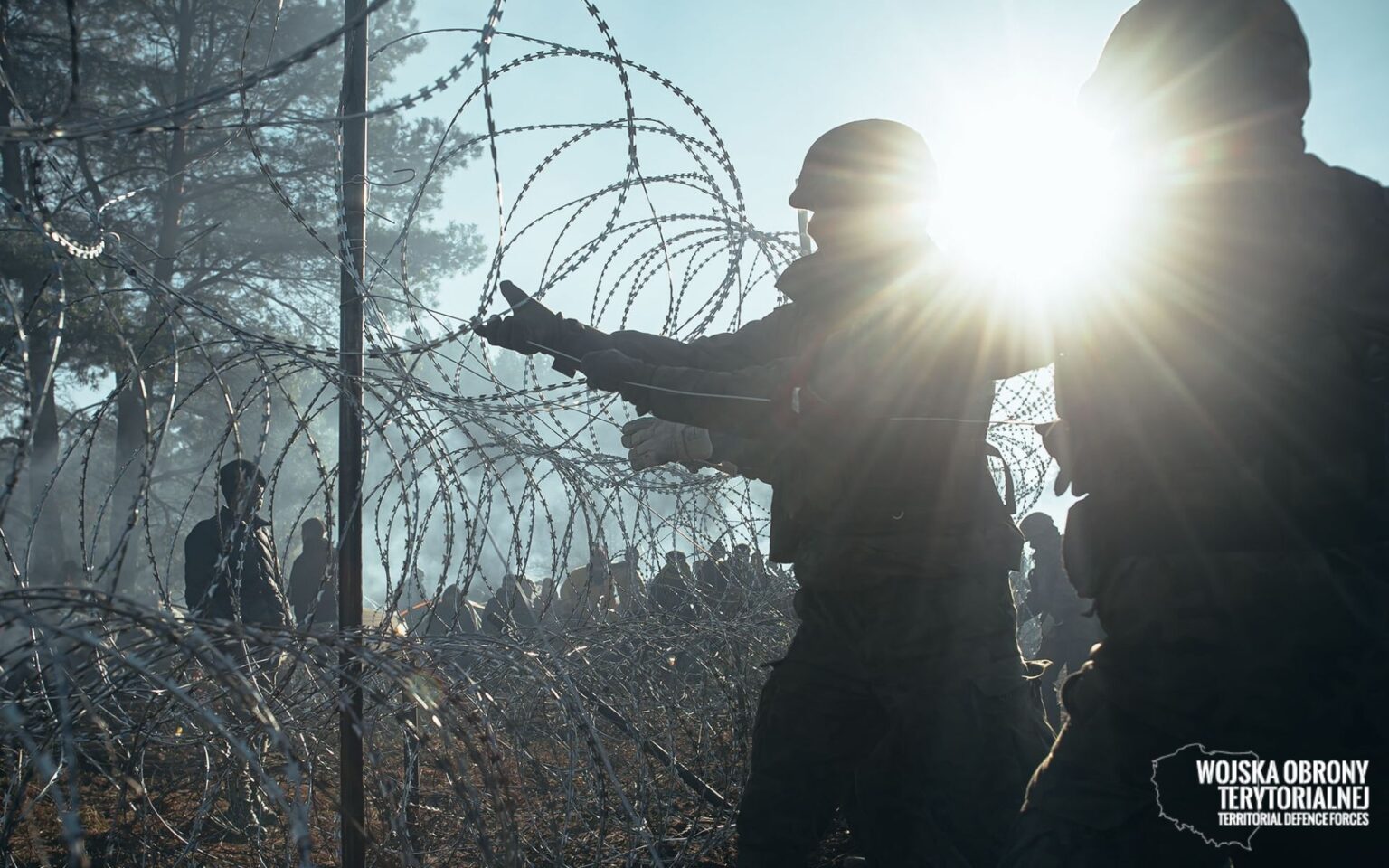The Russian invasion of Ukraine, and earlier the migrant crisis on the border of Poland and Belarus, made many realize how important it has become to guard the country’s border. But is it sufficiently protected today? – asks Mariusz Marszałkowski, editor at BiznesAlert.pl.
History of border protection in Poland
Border protection in Poland is handled by the Border Guard. This formation is armed with light personal weapons and the necessary equipment that enables the monitoring of the border. Since 2021, we have witnessed unprecedented activity on the Polish border. Thousands of migrants from Arab countries, Africa and Central Asia tried to force their way across the border with Belarus to reach Western Europe. The entire operation was probably prepared by the Russian and Belarusian intelligence, which actively participated in the transportation of immigrants to the Polish border, as well as gave instructions and support in which places to cross it. Lt. Anna Michalska, the spokeswoman for the Border Guard, told BiznesAlert.pl that 90 percent of the detained foreigners who tried to cross the Polish-Belarusian border in 2022 came to Belarus directly from Russia. The crisis culminated when they tried to storm the border near Kuźnica Białostocka. These events prompted the decision-makers to build a solid fence on the border with Belarus. Apart from the more than five-meter steel fence, a decision was made to set up the so-called perimeter protection system (PPS).
The PPS is a set of sensors that are supposed to report about an intruder in a protected area. This system is not new. On the other side of the Polish border, a similar system was already in operation during the Soviet Union. It was called Sistema. Sistema was intended to protect the Soviet border from its neighbors. In addition to several rows of fences, it was also equipped with cameras and motion detection systems. Perimeter protection systems are also widely used to guard strategic facilities, such as power plants, refineries, military units, airports or harbors. In this system, it is important to integrate several different sensors, so that they complement each other and give the maximum level of protection. A PPS includes motion detectors, thermal and daytime cameras, as well as seismic sensors to detect footsteps. Modern systems are equipped with modern algorithms that distinguish the steps of animals from humans, which excludes the triggering of an alarm in case an animal is approaching.
The Border Guard has been using PPSs for over 15 years. Until now, however, they were installed at individual points, for example, in places where there is the greatest risk of the green border being crossed, and in general they did not work as part of a comprehensive system with cameras, detectors and sensors and instead they had fewer devices all of which were mobile. The Border Guard used the perimeter protection system in the Bieszczady Mountains, on the Polish-Ukrainian border, as well as on certain sections of the border with Russia. It was only after the construction of the fence on the Polish-Belarusian border that a decision was made to constantly monitor virtually the entire border using electronic systems.
Lt. Anna Michalska told BiznesAlert.pl that so far an electronic barrier has been activated along 127 km of the Polish-Belarusian border. To complete the system, 78 km must be added. Today there are almost 2,000 day / night cameras and motion detection cables at the border. In total, more than 3,000 camcorders will be installed on the 206 km long Polish-Belarusian border, and 400 km of detection cables.
In October 2022, it was decided that an electronic barrier would also be built on the border with the Kaliningrad region. This barrier is supposed to be about 200 km long and, just like the system on the border with Belarus, include day-night cameras and movement detectors. The construction is supposed to start in March 2023. The investment project is currently being prepared.
In recent years, 30-50 meters high observation towers have been built on the border, which are equipped with modern thermal imaging cameras that are able to see a person at a distance of up to several kilometers, depending on meteorological conditions. These towers began to be built en masse as a result of the Russian annexation of Crimea in 2014 and the war in eastern Ukraine. According to the then head of the Border Guard, general Marek Łapiński, in 2017 the formation was planning to build 48 observation towers. In response to our question, the Border Guard reported that it currently had 50 optoelectronic systems installed on observation towers.
The future of border defense in Poland
In the face of the Russian invasion of Ukraine, it seems reasonable to ask whether the existing means of protecting the state border are sufficient. While there is no indication that Poland will become a victim of Russian aggression in the near future, such a scenario cannot be completely ruled out. The Ministry of National Defense is preparing for such an option, hence the numerous arms purchases abroad. Being neighbors with Russia and its puppet Belarus does not inspire optimism, and also forces Poland to improve its defence capabilities, including the physical protection of its border.
Since last summer, Ukraine has been intensively developing defensive fortifications and engineering anti-tank dams on the border with Belarus and Russia. Such dams and local fortifications are supposed to stop the Russian offensive. For years, it was claimed that a full-scale war in Europe would not occur. The Ukrainian experience shows that in areas where barricades and fortifications have been built, the military is capable of successful protection for even a few years. It’s happening in the vicinity of Donetsk, Avdiivka, or earlier near Pisky. The defense of Ukraine, where it has access to the appropriate infrastructure, is able to deter Russian attacks. Field fortifications are already standard on the Ukrainian fronts. This is also done by the Russians, not only in the occupied territories, but also on the territory of Russia, for instance in the Belgorod and Kursk oblasts.
Is it time for trenches on the border?
In response to our inquiry, the Border Guard confirmed it did not currently plan to install anti-tank dams or other forms of physical border security on the border with Russia and Belarus beyond what has been announced. Of course, one should be aware that the construction of fortifications on the border would be much more expensive than the construction of a physical barrier on the border with Belarus in the form of a fence. However, it is already worth considering such an investment in the future, in the event the security situation in our part of Europe deteriorates. What would such a dam look like? For example, one could prepare the area for the possible digging of anti-tank ditches or other types of anti-tank dams. One should also think where and how such field fortifications should be built.
The Russian aggression has changed virtually everything in the reasoning about the security of the state. Something that used to cause a smirk is not funny anymore. Hiding places, shelters, fortifications is what is stopping the Russian invasion in Ukraine today and protecting human life. If we are buying tanks, planes and ships thinking about Russian aggression, we must also think about how and where to hide the military defending our borders, cities and villages.









